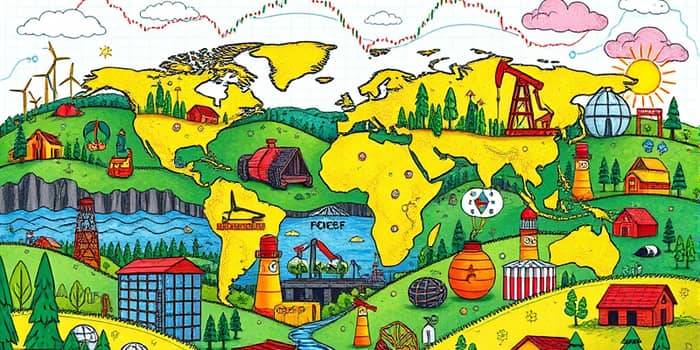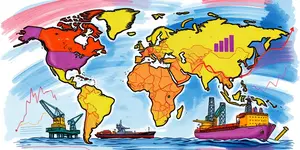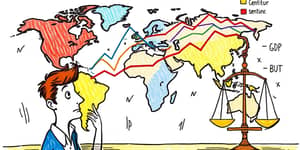
Environmental, Social, and Governance (ESG) criteria are reshaping global commodity markets at an unprecedented pace. From fossil fuels to rare earth metals, producers and investors face new benchmarks that influence prices, supply, and demand structures.
In the post-pandemic recovery and amid geopolitical tensions, primary commodity prices rose by 1.9 percent between August 2024 and March 2025. Natural gas and precious metals led gains, while oil prices declined by 9.7 percent due to trade war fears, increased non-OPEC+ supply, and relaxed production cuts.
Nominal prices remain above pre-crisis levels despite forecasts from the World Bank projecting a 12 percent overall decline in 2025 and a further 5 percent drop in 2026. Even after these adjustments, price levels are expected to stay 17 percent above the 2015–2019 average through at least 2026.
As stricter environmental regulations take effect, older extraction and processing facilities are forced to close or limit operations. This capital moving away from high-carbon sectors leads to a direct contraction in supply, particularly in oil, coal, and certain metals.
Companies seeking cleaner production face delays in permitting for new projects, while existing assets risk becoming stranded. The result is a persistent supply gap that intensifies price volatility for emission-intensive commodities and underscores the growing influence of ESG standards on market access.
Global net-zero commitments by countries representing 54 percent of greenhouse gas emissions have triggered a surge in demand for metals and minerals critical to renewable technologies. Copper, lithium, nickel, cobalt, and rare earth elements are at the forefront of this structural shift.
Booming demand for specific green materials outpaces near-term supply capabilities, as battery production for electric vehicles, solar panel manufacturing, and wind turbine assembly expand rapidly. This mismatch is pushing prices higher and accelerating investment in new extraction ventures.
The impact of ESG pressure varies significantly across sectors. A clear assessment helps stakeholders navigate emerging risks and opportunities.
Commodity derivatives markets are adapting by launching sustainability-linked contracts, renewable energy derivatives, and weather or carbon-risk hedges. These products enable producers and consumers to manage exposure to climate-related and regulatory risks more effectively.
Potential for carbon pricing looms large, as policymakers explore mechanisms to incentivize emission reductions. The emergence of carbon-linked instruments underscores the need for robust risk-management frameworks that incorporate ESG factors into hedging strategies.
Significant regulatory changes in 2025, including shifts in drilling approvals, pipeline permissions, and renewable subsidies, could intensify or ease ESG constraints. Trade wars, tariffs, and sanctions add layers of uncertainty that amplify price swings in both traditional and green commodity markets.
Institutional investors now integrate ESG criteria as a permanent feature of portfolio management, redirecting capital away from sectors deemed high-risk while fueling growth in clean-energy infrastructure and low-carbon technologies.
Looking ahead, the repricing of commodities under ESG pressure is likely to persist. Market participants must adapt supply chains, invest in sustainable technologies, and develop new financial instruments to navigate evolving landscapes.
Companies that proactively align with ESG imperatives may secure long-term competitive advantages, while those that delay adaptation risk stranded assets and constrained capital access. Policymakers and investors alike should monitor key indicators—such as regulatory announcements, net-zero pledges, and commodity inventory levels—to anticipate pricing shifts.
The ongoing interaction between ESG standards and commodity markets presents both challenges and opportunities. By embracing sustainable practices, fostering innovation in financial products, and engaging in informed policy dialogue, stakeholders can contribute to a resilient and purpose-driven commodities ecosystem.
References













